The Snowbird Tram: An Engineering Marvel
Author: Peter Landsman
Published Date: 08/21/2020
Read Time: 4 Minutes
You've ridden on Snowbird's Aerial Tram, but do you know how it came to be? Learn the story behind one of the most iconic ski lifts in the world.
Few ski lifts rank as iconic as the Snowbird Aerial Tram, with its striking red and blue cabins ascending from Little Cottonwood Canyon to Hidden Peak. “When it opened in 1971, the Tram was one of the longest, largest and most powerful aerial tramways in the world,” wrote local Walt McConnell in his 168-page book dedicated to the remarkable machine.
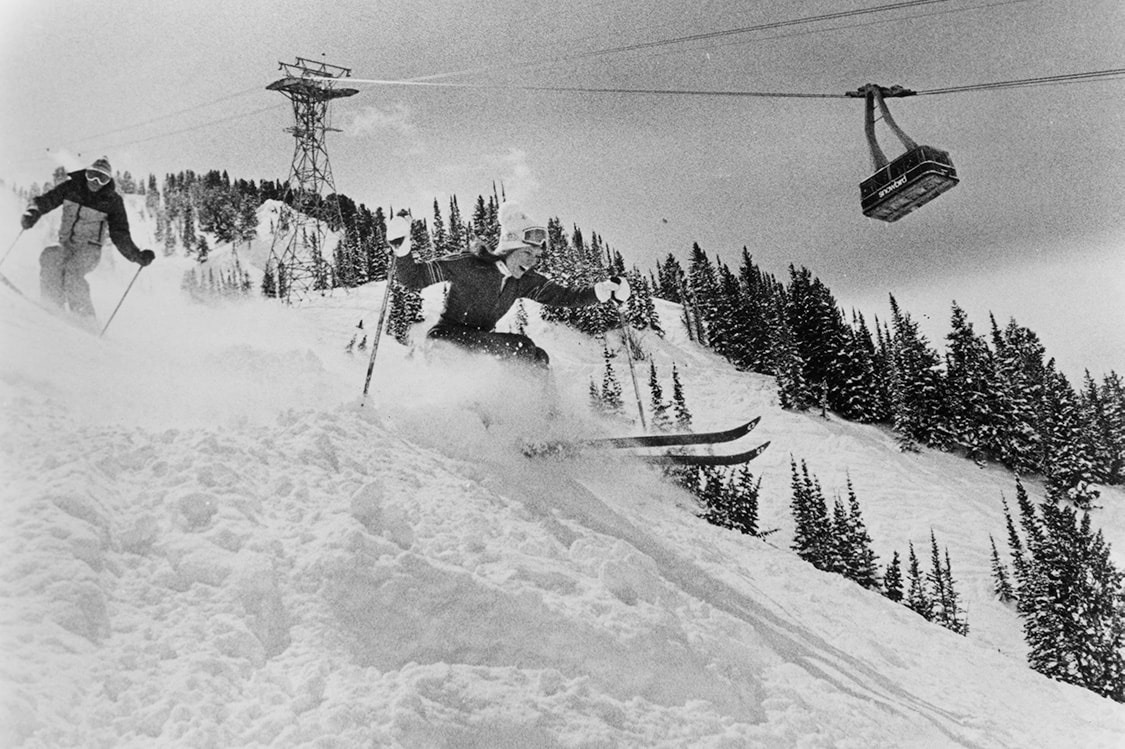
“It was loaded with innovative technical features and immediately became the symbol of Snowbird.”
Decades after lifts first spun at Alta Ski Area, employee Ted Johnson envisioned creating a new mountain village nearby with modern American design anchored by a tramway. In his mind, a tram was the only type of lift to build and the route to Hidden Peak was clear. “The awesome massiveness of the tramway and its terminal buildings-to-be set the stage for the bold architectural statements of all of Snowbird,” he recalled in 2001.
Businessman and Navy veteran Dick Bass agreed to join the Snowbird team in 1969 and provide financial backing. After visiting other tramways around the world, Bass and Johnson selected Swiss manufacturer Garaventa. The companies signed a $3.5 million contract – an amount unheard of for a single lift in that era. Each cabin would carry 125 passengers, more than any other tram at the time.
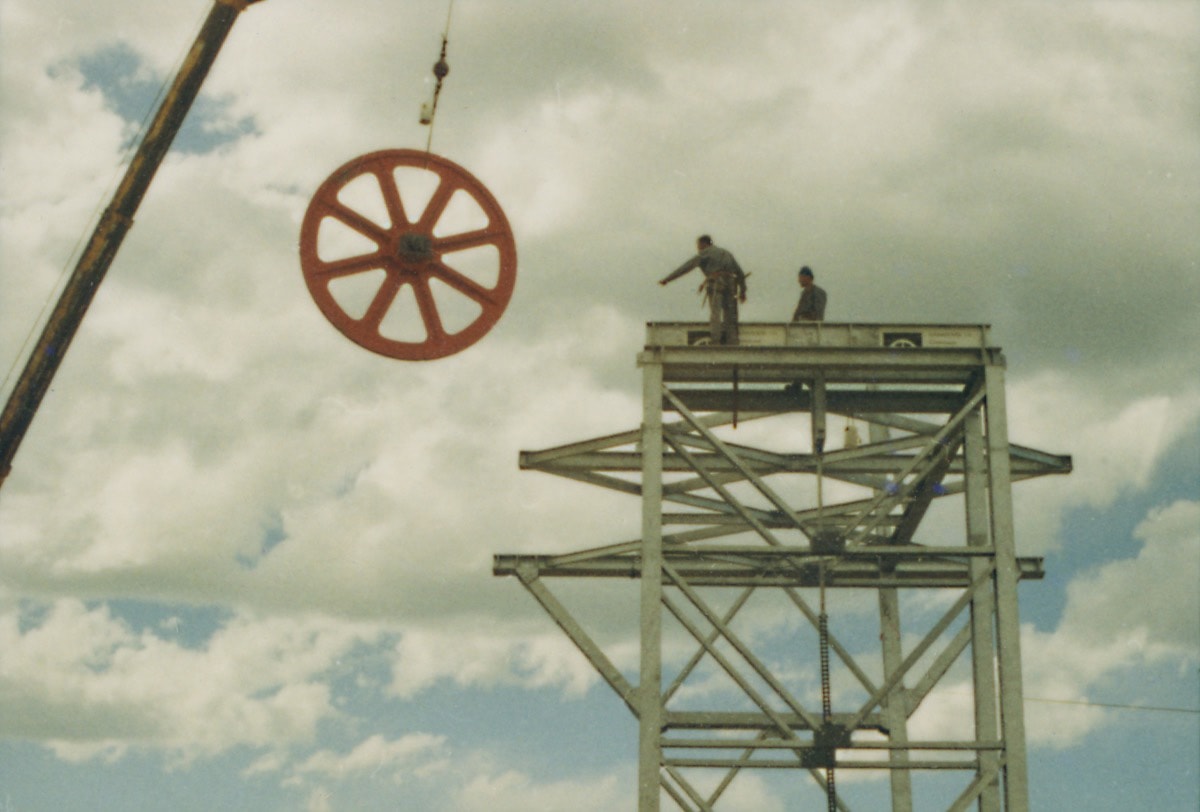
Bass later called the Tram choice “one of the best decisions I ever concurred in the making.”
Construction commenced that spring with road building, tree clearing and forming of foundations for stations and towers. Garaventa arrived in May of 1971 and Cannon Construction of Salt Lake was tasked with fabricating the buildings and plaza. The Swiss quickly nicknamed Snowbird “snow hell” as storms pummeled the Wasatch through spring and again that fall. By all accounts, those at Snowbird were impressed with the work ethic of Garaventa employees in harsh conditions at extreme heights. The story goes that hidden among Tram parts, 200 gallons of schnapps was shipped to Utah labeled as “cable grease” to fuel the builders.
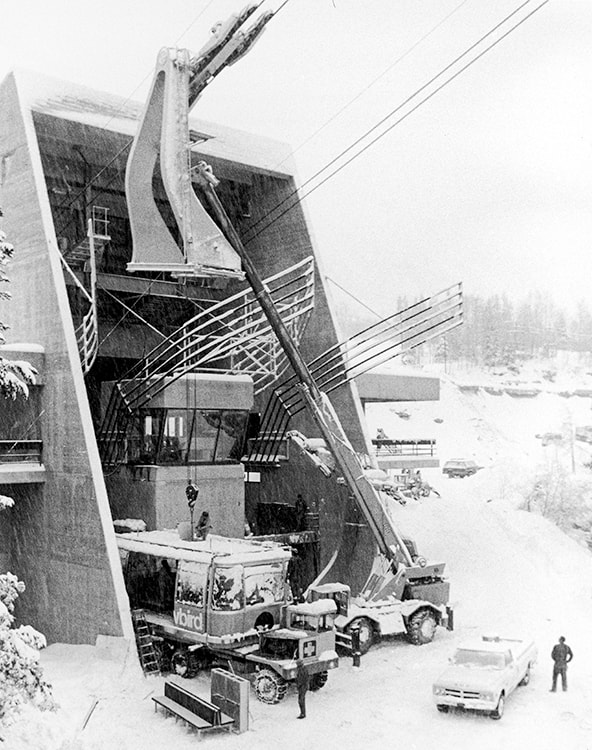
Today, the Tram remains the focal point of the reimagined Snowbird Center, with floor-to-ceiling windows flanking the engine room. Four bullwheels deflect the haul rope in a figure-eight pattern, creating a magical show in the Tram Club whenever a trip is in progress. The system is powered by a 1,750-horsepower electric motor, which at the time of installation was the largest in the world for a ropeway. An auxiliary engine can run the cars at reduced speed while a third rescue system with its own cable is housed on the fourth floor.
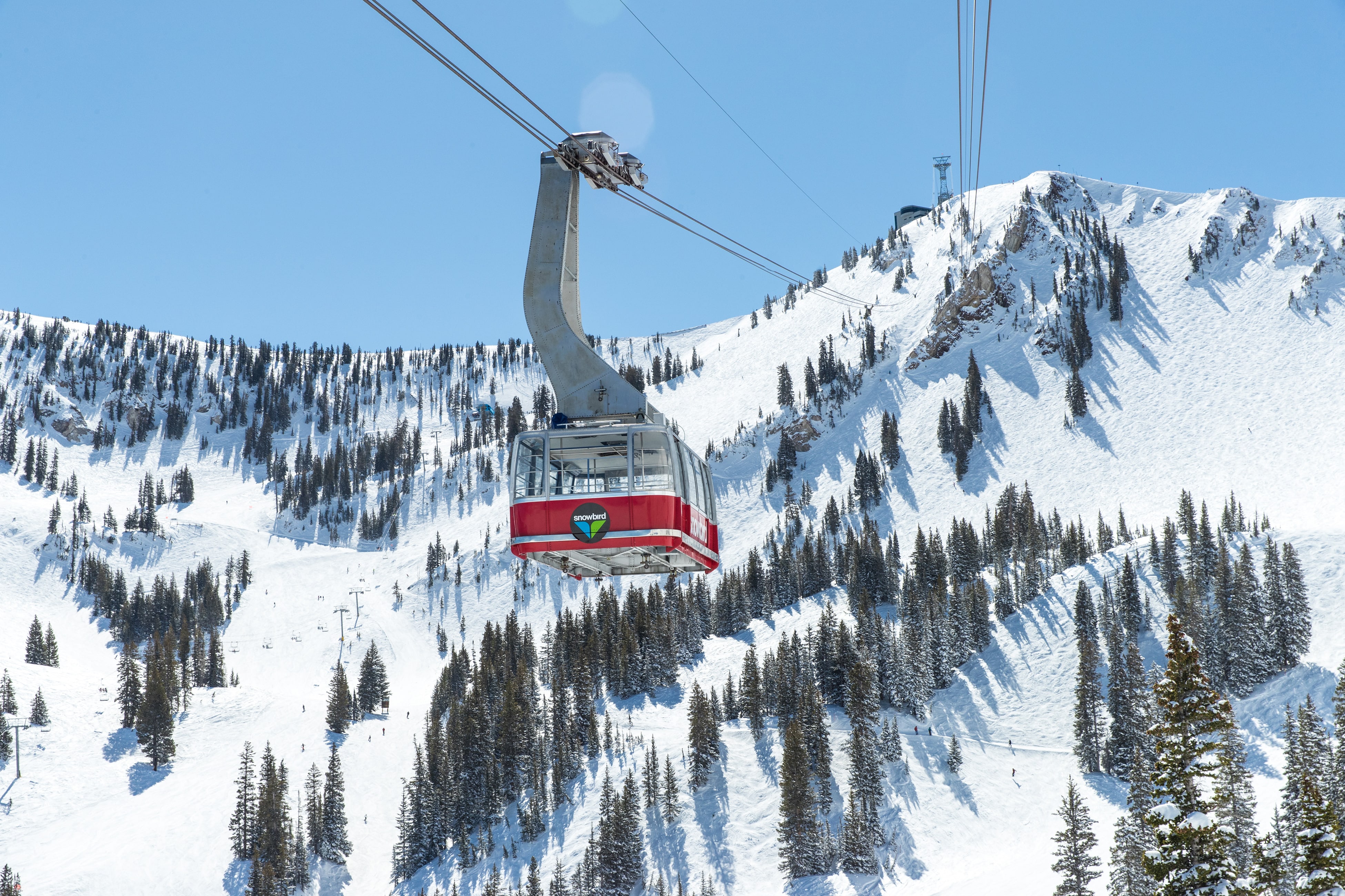
Four towers range in height from 70 to 140 feet and feature some of the largest saddles Garaventa ever built. Tram cars can travel over them without slowing down, yielding an hourly capacity of up to 1,000 skiers per hour. The longest span is two-thirds of a mile between towers 3 and 4 where, at their highest point, cabins soar 370 to 400 feet above The Cirque.
The cars are the largest in the Americas at 14 by 23 feet and the world’s first with doors on both sides for shorter load times. The combined carriage, hanger and cabin weigh 18,400 lbs. and can carry another 21,420 lbs. A testament to its power, the Tram was enlisted to haul large sections of the new Mineral Basin Express lift to Hidden Peak in 1999.
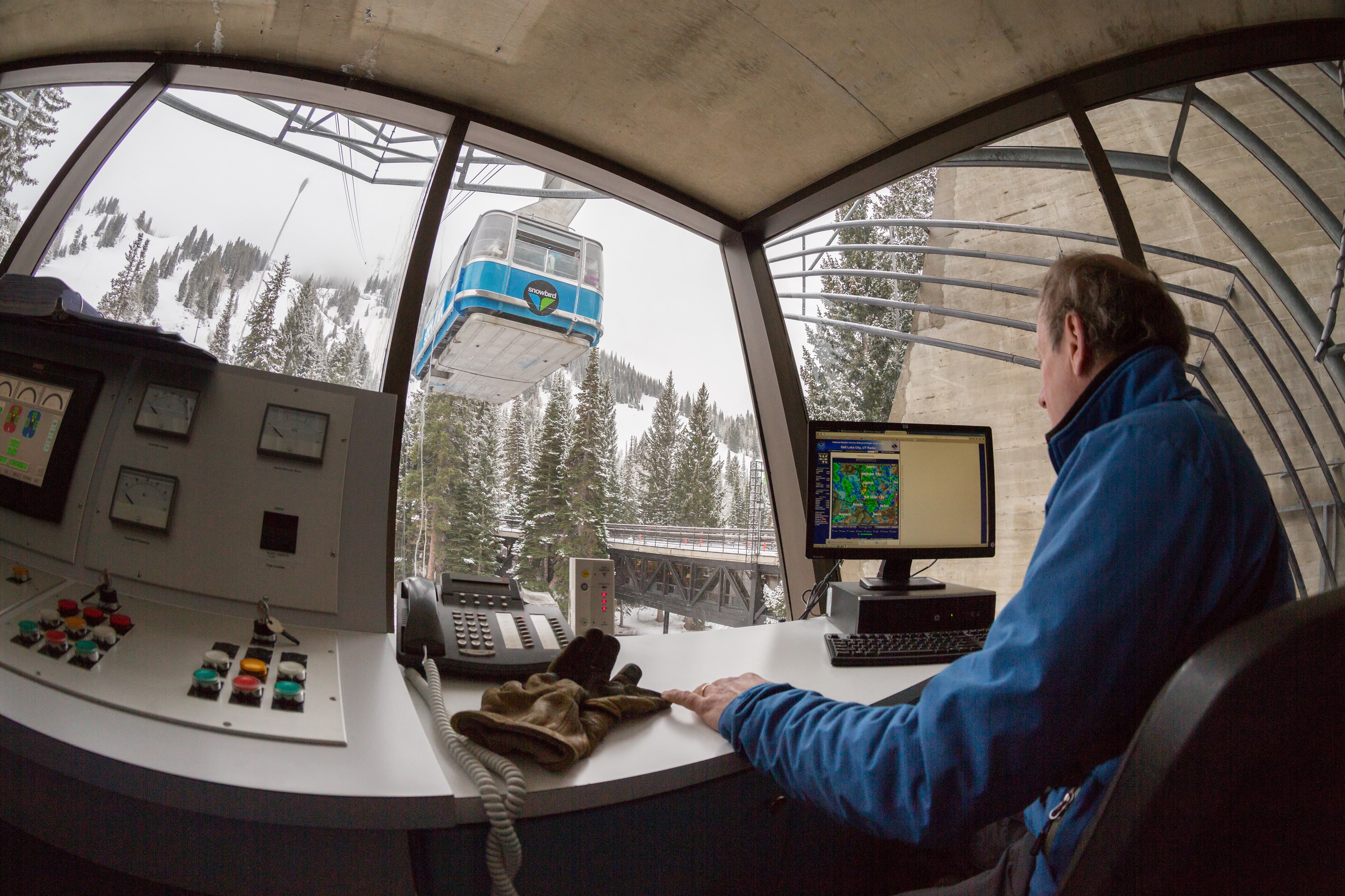
Although nearing 50 years old, the cableway is continually upgraded. Its two haul ropes, which pass through 11 different bullwheels, have been replaced three times. In 2000, Frey AG of Switzerland installed a $600,000 PLC control system, only the fifth in the world, to replace the original controls. The new setup transmits information via the haul rope between the towers, cabins and stations. Trips run more smoothly and can be set to any speed as high as 22 miles per hour. Snowbird replaced all four track ropes in 2016 after some 300,000 trips, a project that took two months. For this winter, the tower saddles were upgraded with new brass profiles to improve ride quality. All of these advancements combined with timeless styling ensure the Tram will maintain its iconic status for years to come.
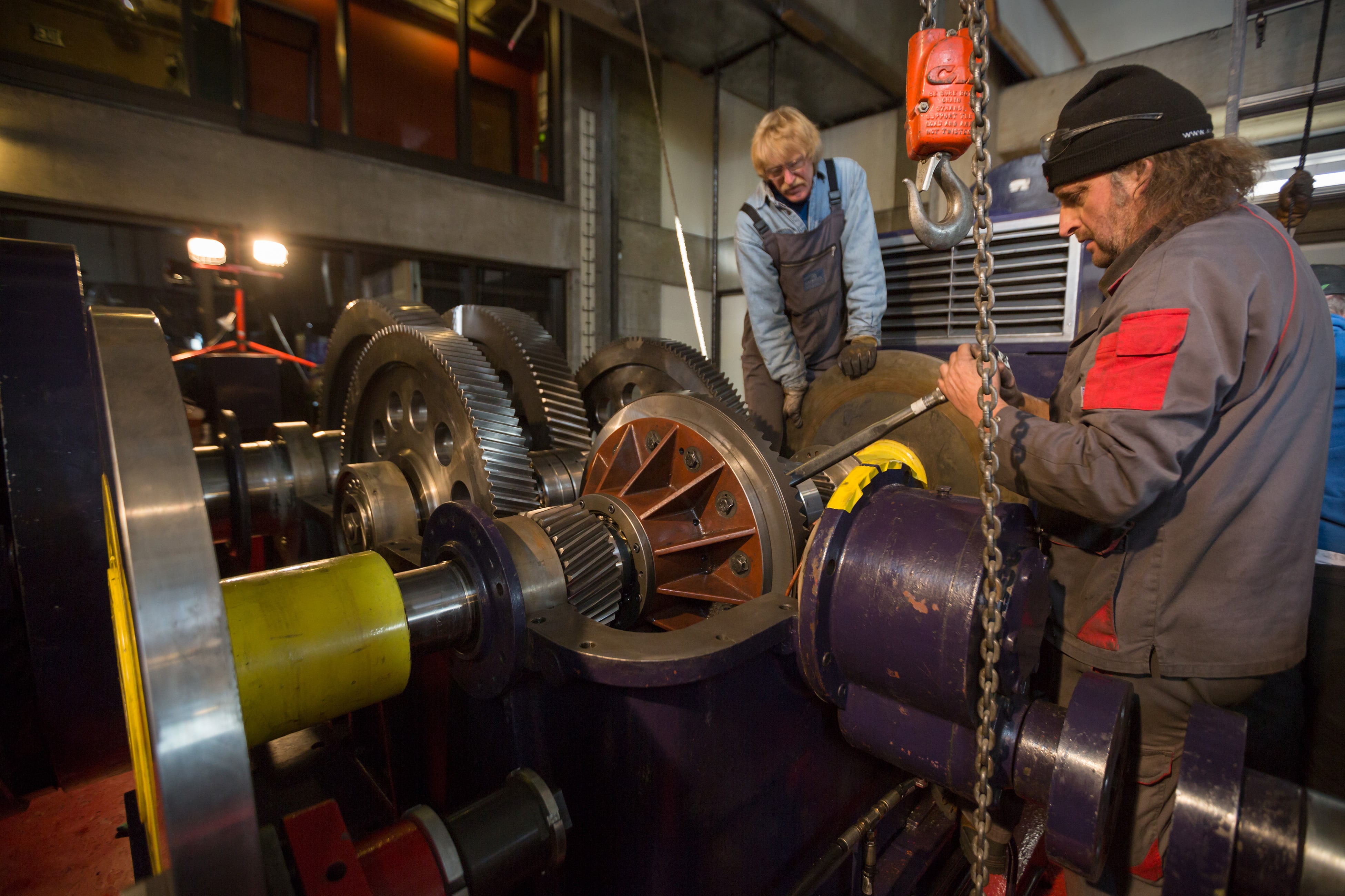
About the Author
Peter Landsman is the founder and editor of Lift Blog, a website covering the ski lift, tramway and gondola industries. He lives in Jackson Hole, Wyoming and skis 130 days a year.